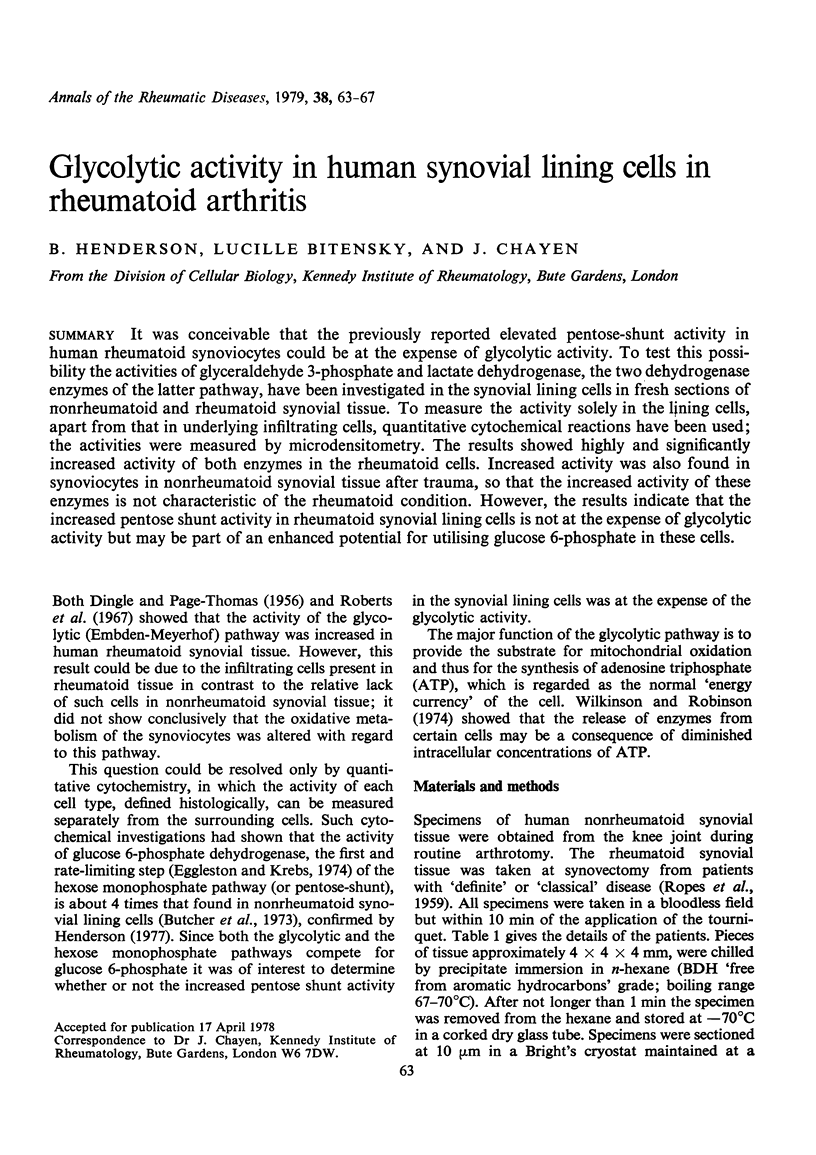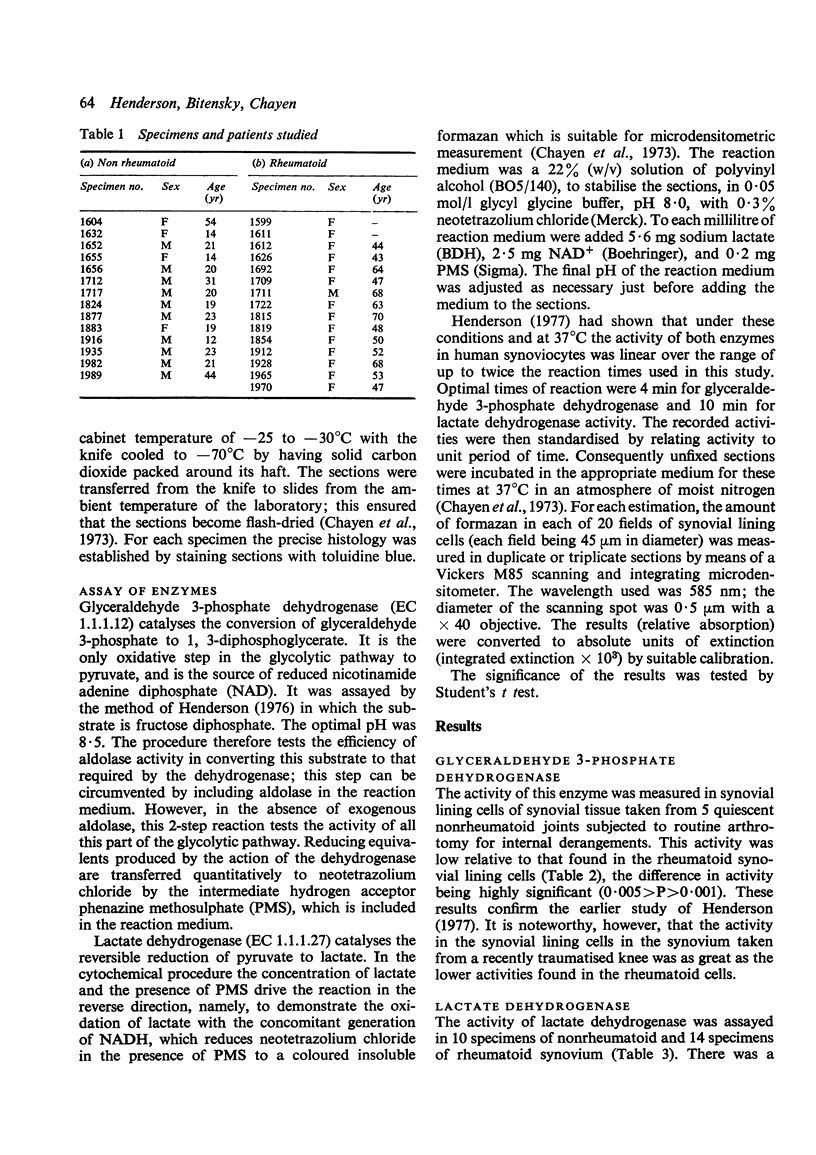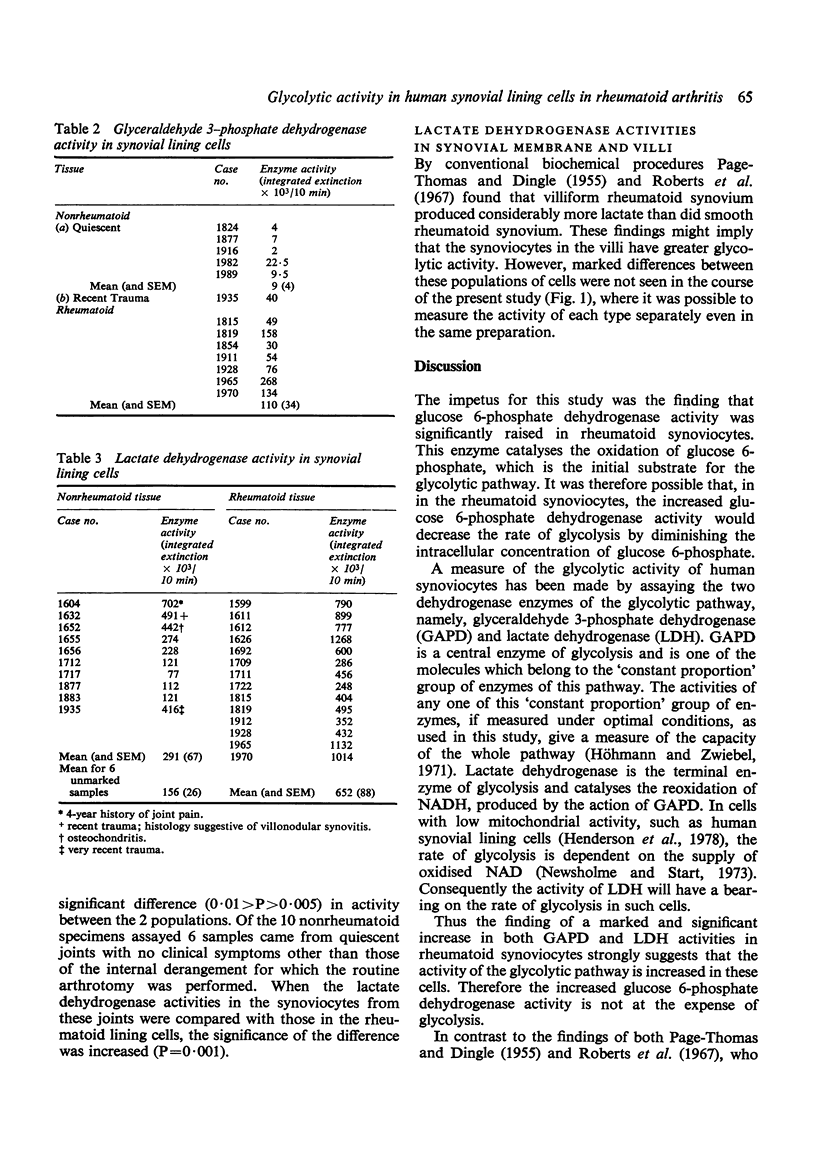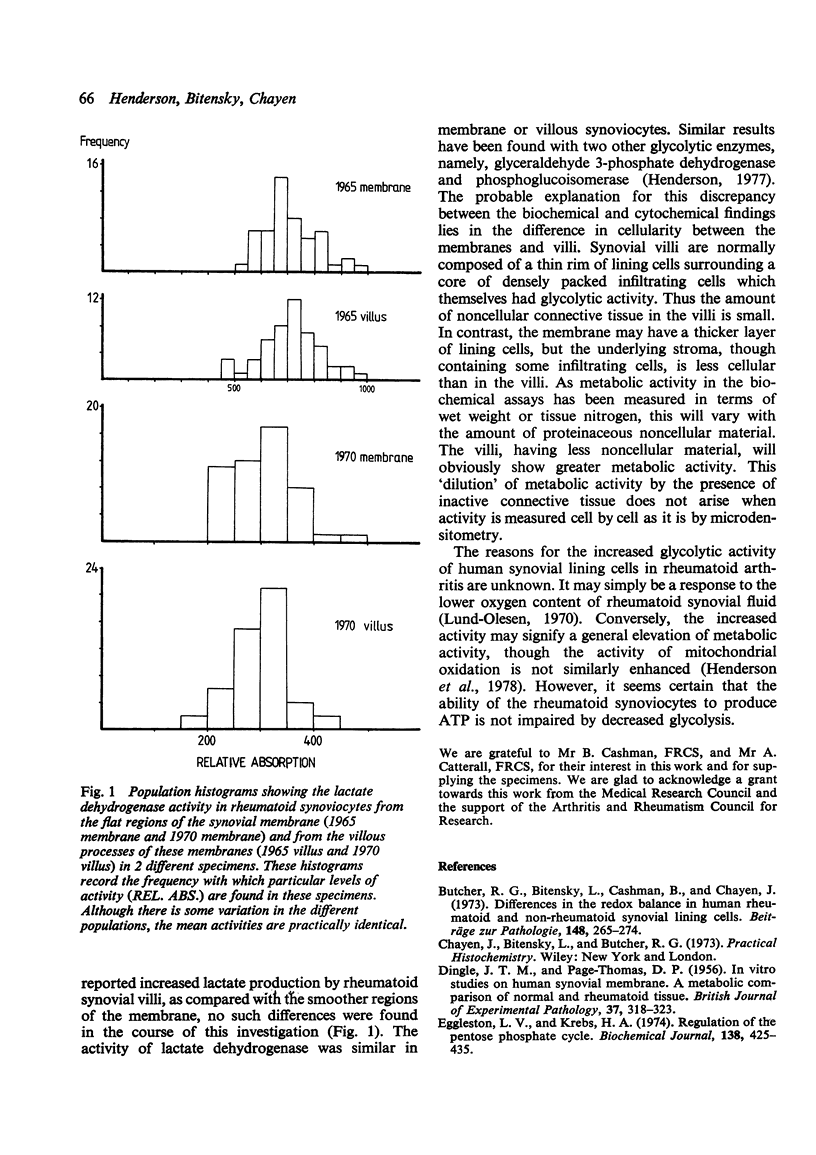Abstract
It was conceivable that the previously reported elevated pentose-shunt activity in human rheumatoid synoviocytes could be at the expense of glycolytic activity. To test this possibility the activities of glyceraldehyde 3-phosphate and lactate dehydrogenase, the two dehydrogenase enzymes of the latter pathway, have been investigated in the synovial lining cells in fresh sections of nonrheumatoid and rheumatoid synovial tissue. To measure the activity solely in the lining cells, apart from that in underlying infiltrating cells, quantitative cytochemical reactions have been used; the activities were measured by microdensitometry. The results showed highly and significantly increased activity of both enzymes in the rheumatoid cells. Increased activity was also found in synoviocytes in nonrheumatoid synovial tissue after trauma, so that the increased activity of these enzymes is not characteristic of the rheumatoid condition. However, the results indicate that the increased pentose shunt activity in rheumatoid synovial lining cells is not at the expense of glycolytic activity but may be part of an enhanced potential for utilising glucose 6-phosphate in these cells.
Full text
PDF




Selected References
These references are in PubMed. This may not be the complete list of references from this article.
- Butcher R. G., Bitensky L., Cashman B., Chayen J. Differences in the redox balance in human rheumatoid and non-rheumatoid synovial lining cells. Beitr Pathol. 1973 Mar;148(3):265–274. doi: 10.1016/s0005-8165(73)80036-8. [DOI] [PubMed] [Google Scholar]
- DIAGNOSTIC criteria for rheumatoid arthritis: 1958 revision by a committee of the American Rheumatism Association. Ann Rheum Dis. 1959 Mar;18(1):49–53. [PMC free article] [PubMed] [Google Scholar]
- DINGLE J. T., THOMAS D. P. P. In vitro studies on human synovial membrane; a metabolic comparison of normal and rheumatoid tissue. Br J Exp Pathol. 1956 Aug;37(4):318–323. [PMC free article] [PubMed] [Google Scholar]
- Eggleston L. V., Krebs H. A. Regulation of the pentose phosphate cycle. Biochem J. 1974 Mar;138(3):425–435. doi: 10.1042/bj1380425. [DOI] [PMC free article] [PubMed] [Google Scholar]
- Henderson B. Quantitative cytochemical measurement of glyceraldehyde 3-phosphate dehydrogenase activity. Histochemistry. 1976 Aug 25;48(3):191–204. doi: 10.1007/BF00497455. [DOI] [PubMed] [Google Scholar]
- Höhmann B., Zwiebel R. Selection of enzymes for activity measurements in energy metabolism. A new parameter of reference for activity measurements in tissue structures. Curr Probl Clin Biochem. 1971;3:348–350. [PubMed] [Google Scholar]
- Lund-Olesen K. Oxygen tension in synovial fluids. Arthritis Rheum. 1970 Nov-Dec;13(6):769–776. doi: 10.1002/art.1780130606. [DOI] [PubMed] [Google Scholar]
- Roberts J. E., McLees B. D., Kerby G. P. Pathways of glucose metabolism in rheumatoid and nonrheumatoid synovial membrane. J Lab Clin Med. 1967 Sep;70(3):503–511. [PubMed] [Google Scholar]
- THOMAS D. P. P., DINGLE J. T. In vitro studies of rheumatoid synovium; preliminary metabolic comparison between synovial membrane and villi. Br J Exp Pathol. 1955 Apr;36(2):195–198. [PMC free article] [PubMed] [Google Scholar]
- Wilkinson J. H., Robinson J. M. Effect of ATP on release of intracellular enzymes from damaged cells. Nature. 1974 Jun 14;249(458):662–663. doi: 10.1038/249662a0. [DOI] [PubMed] [Google Scholar]


